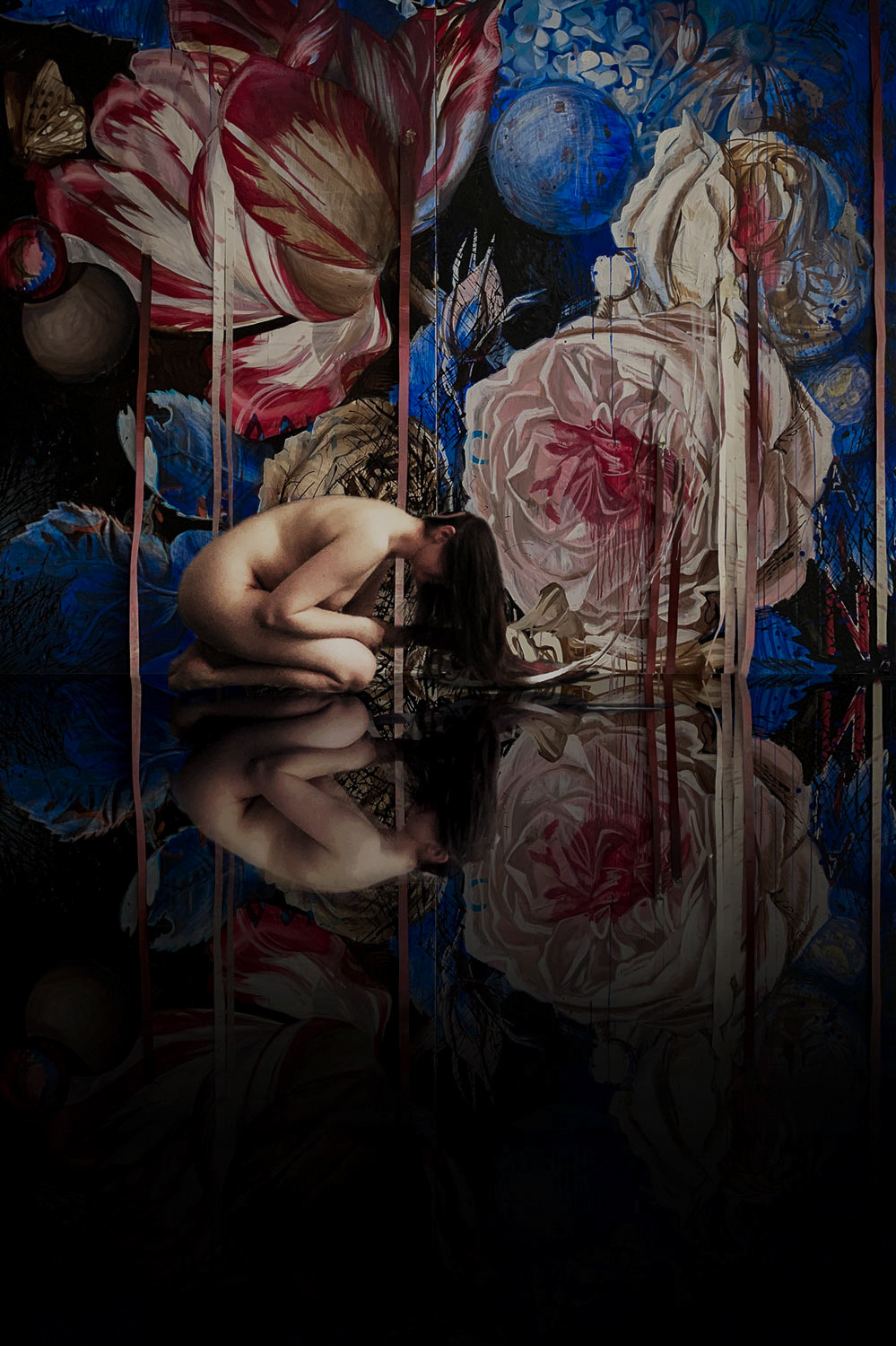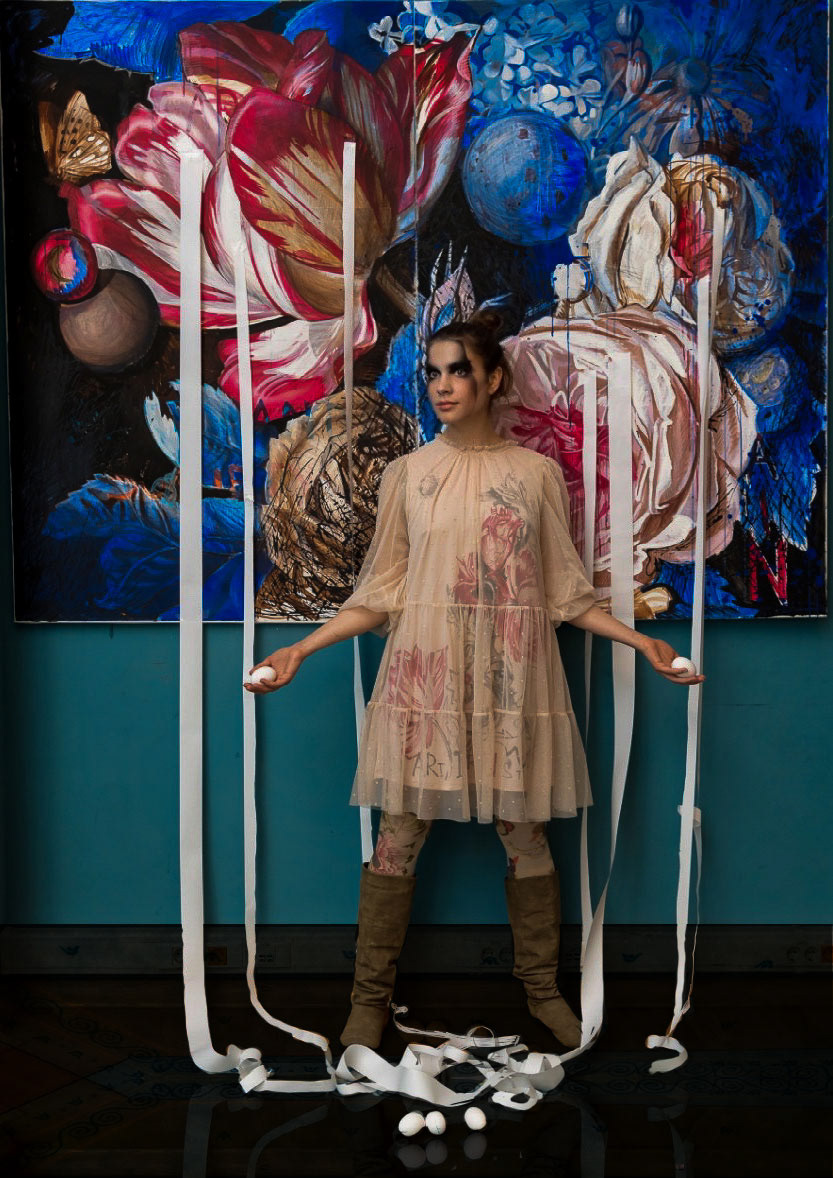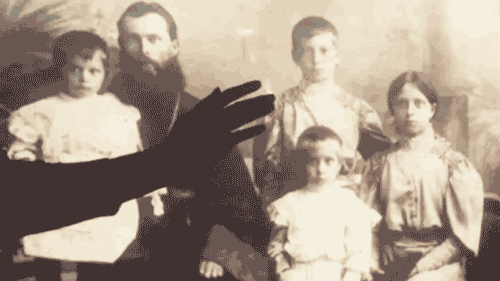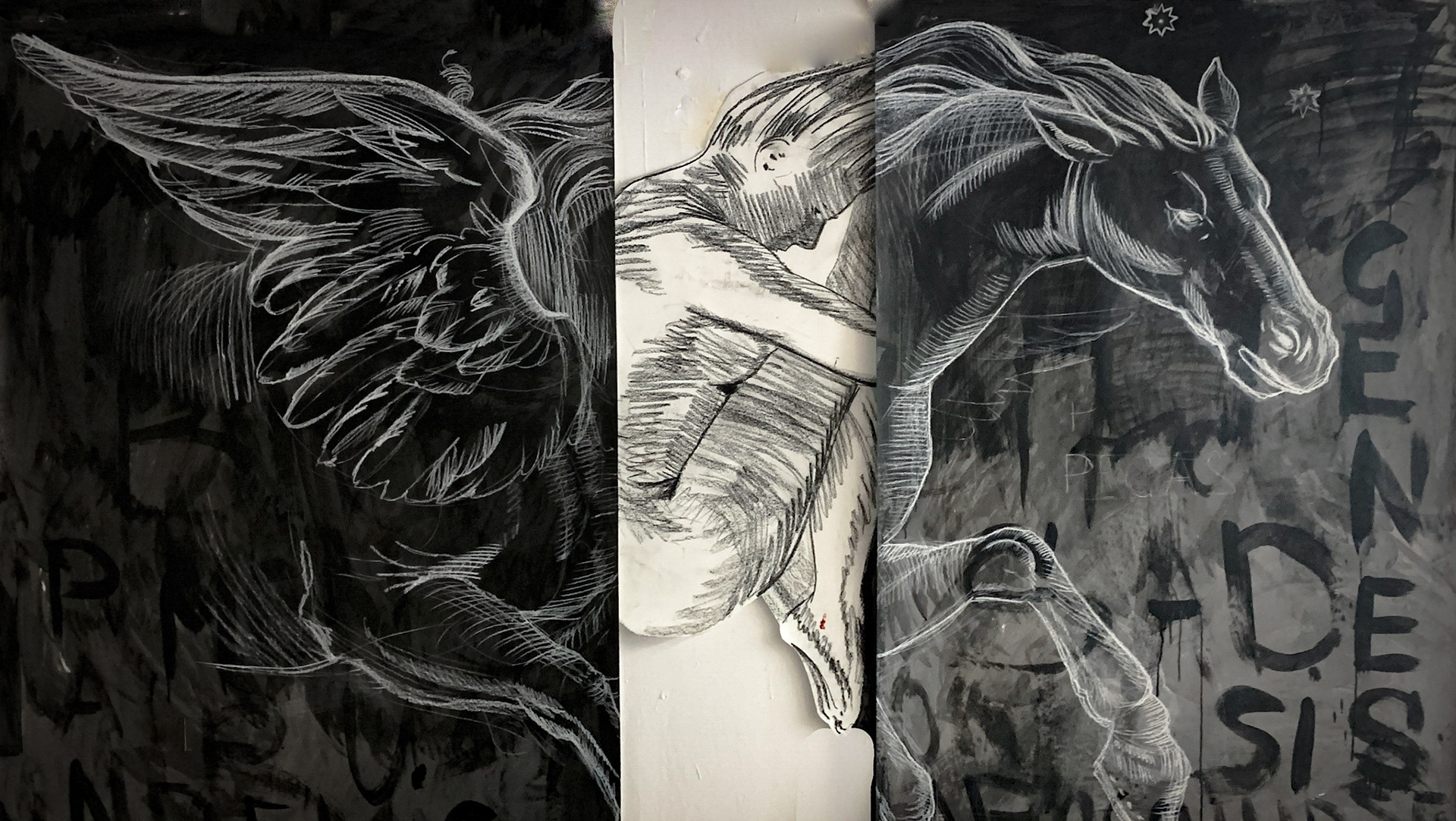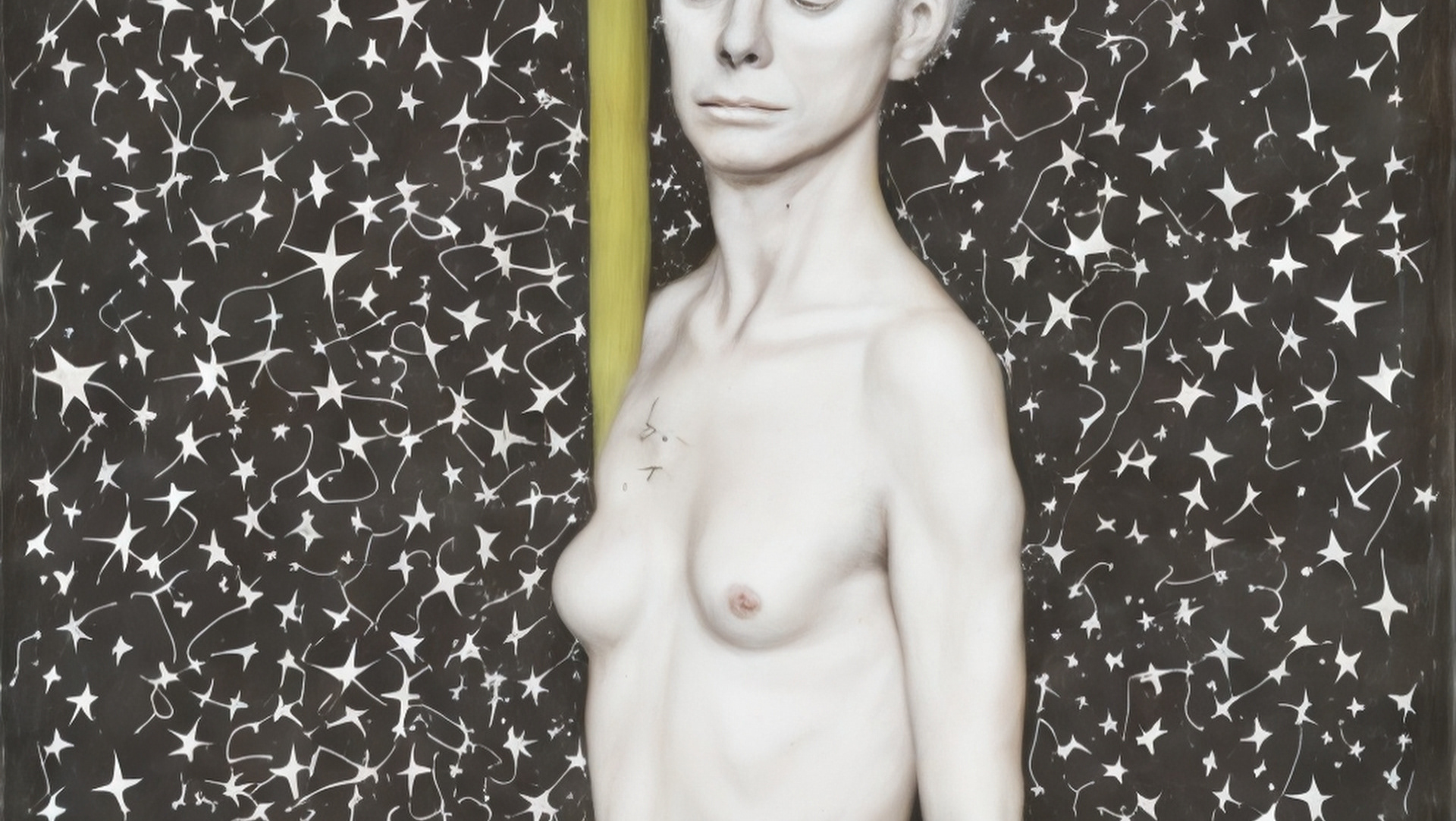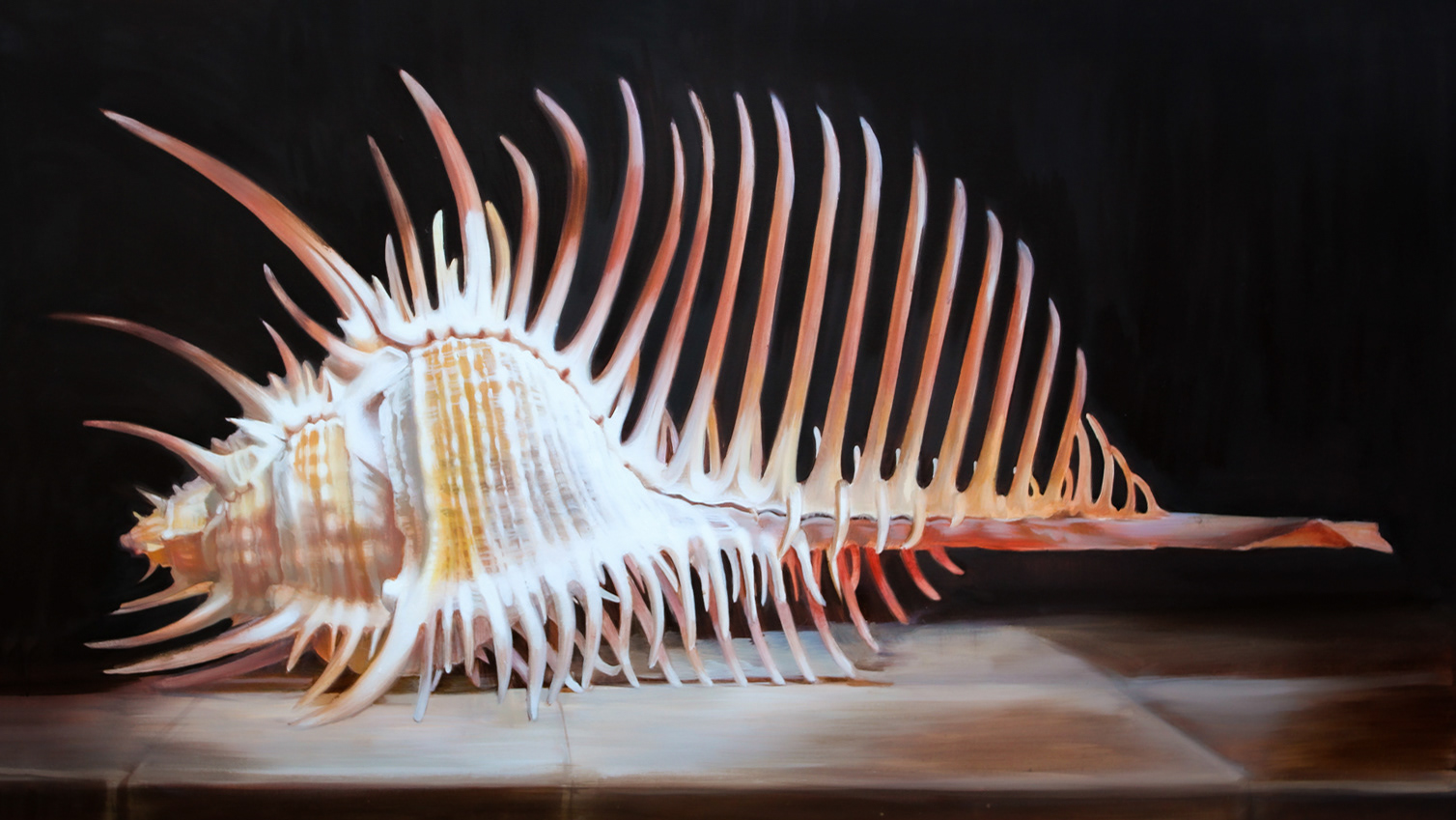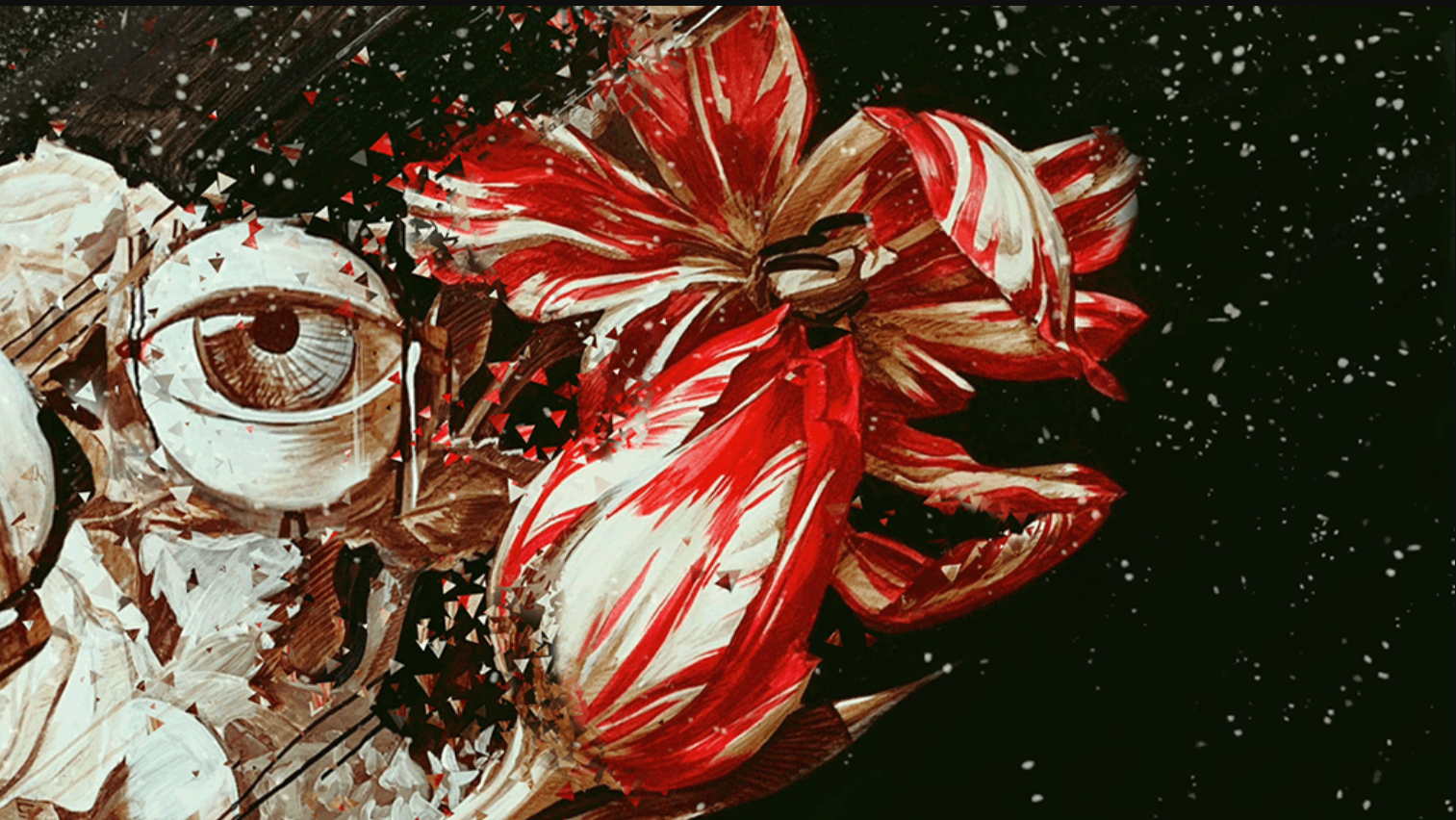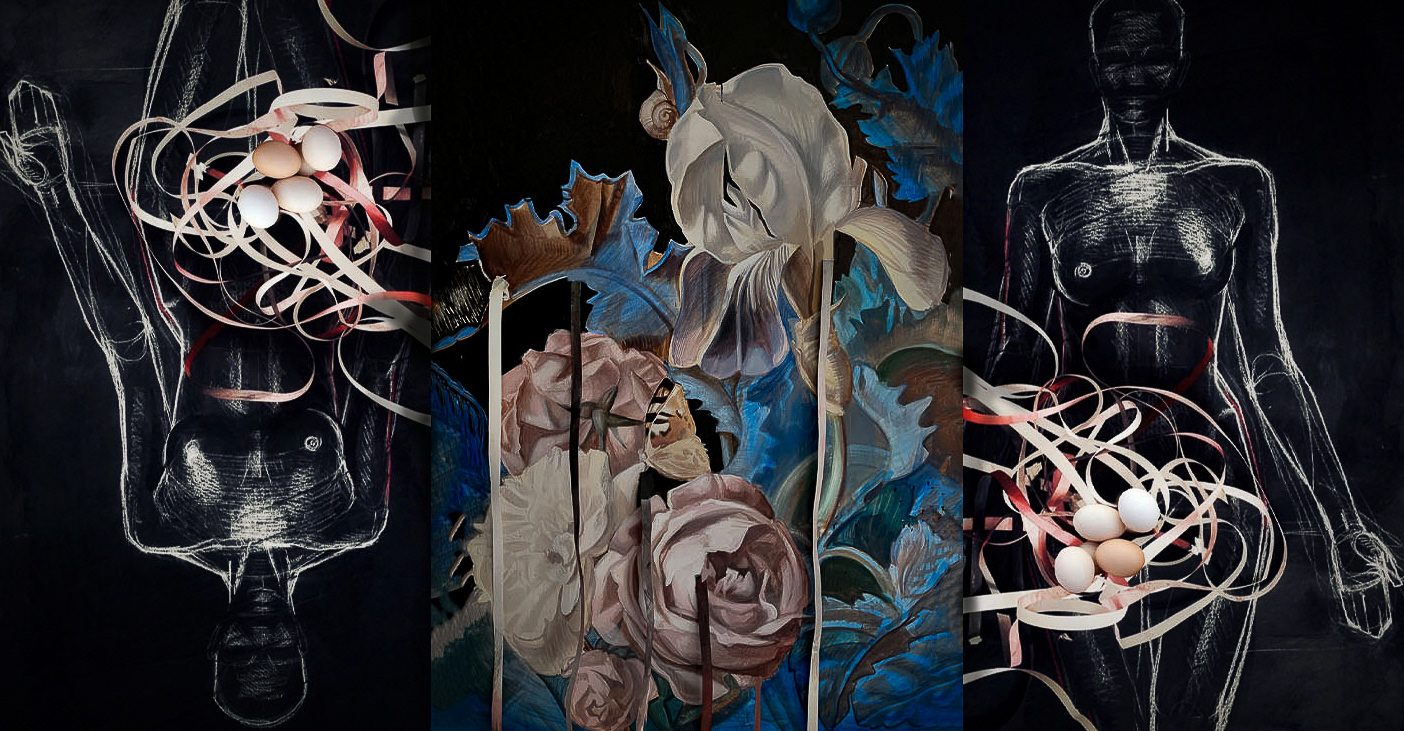
I lost a dear friend to Covid-19 right at the beginning of the pandemic. The news came as a terrible shock and the canvas became a space for my grief. I started writing my feelings into the layers of my paintings: words like “fear”, “pain” and ''The world will never be the same'' - a deeply private feeling that was echoed around me in the guise of the pandemic. Layers of paint allowed me to hide and speak at the same time. Inscribing the words ''post-pandemic society'' into my painting gave me comfort and relief. ‘Post-Pandemic Society' is a series of works that started in response to that grief amidst a global pandemic when circumstances forced me to confront the big issues of mortality and life’s precarity, resilience and potential for renewal.

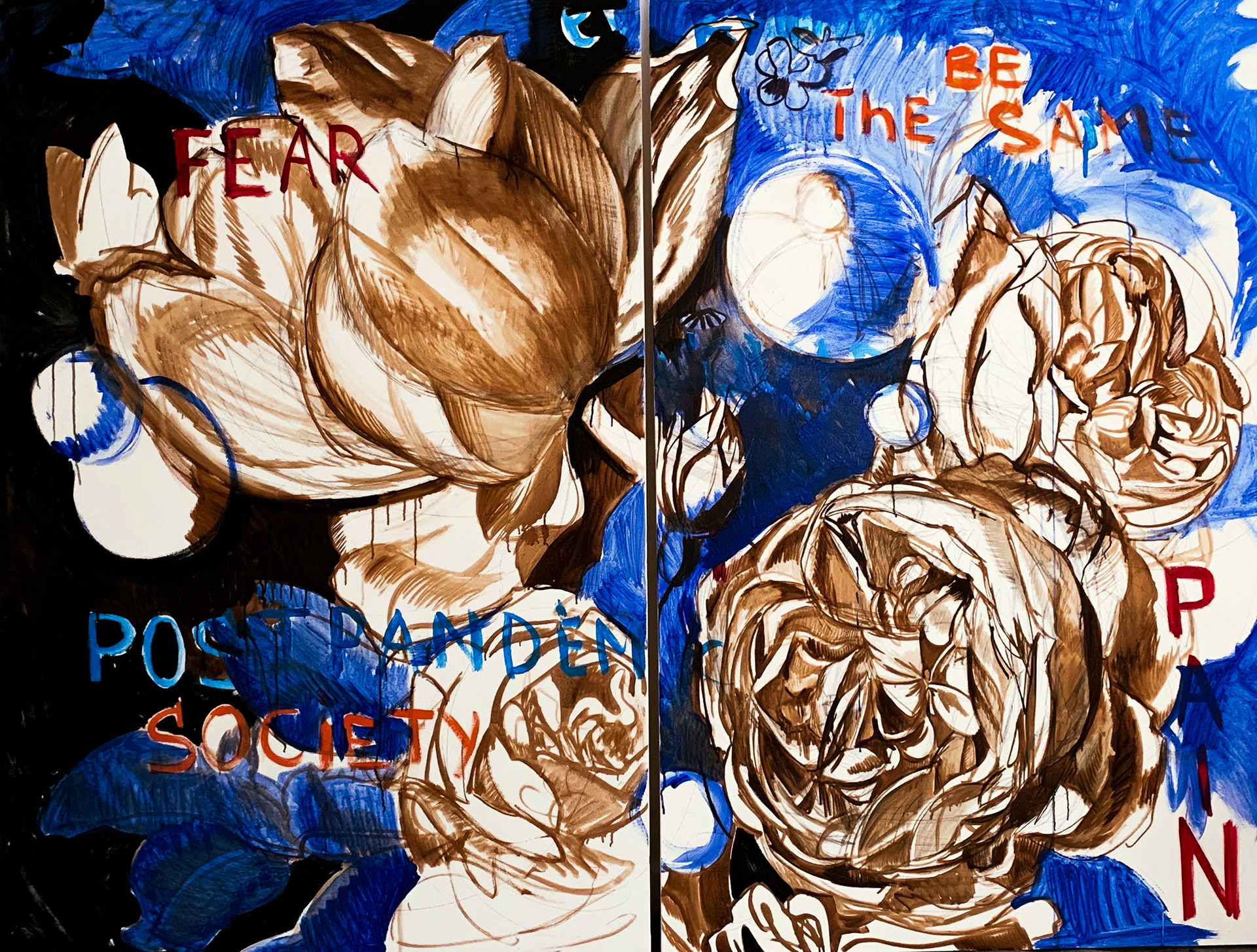

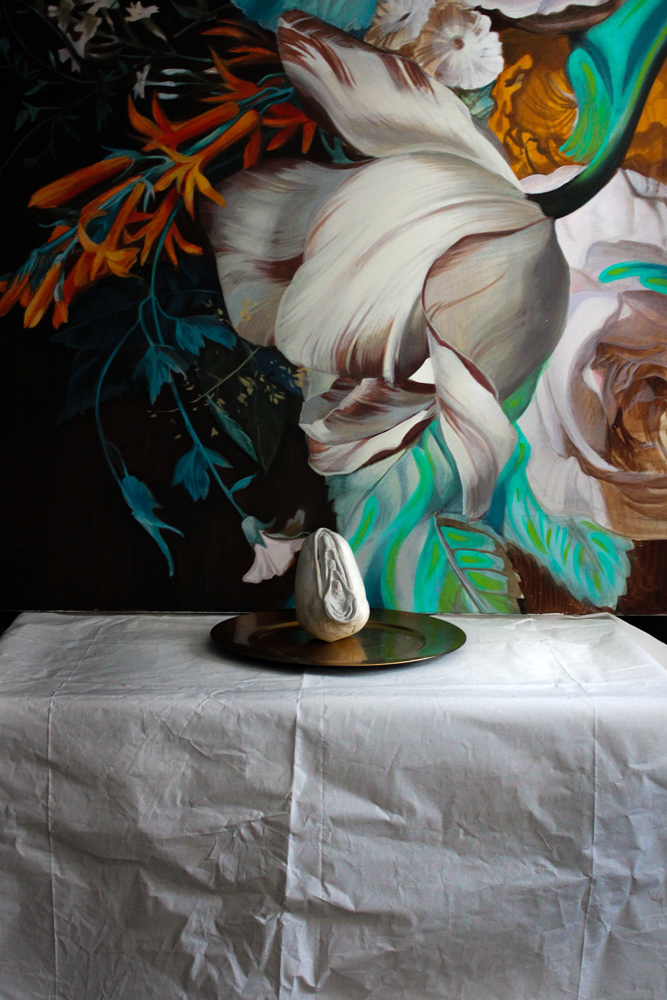
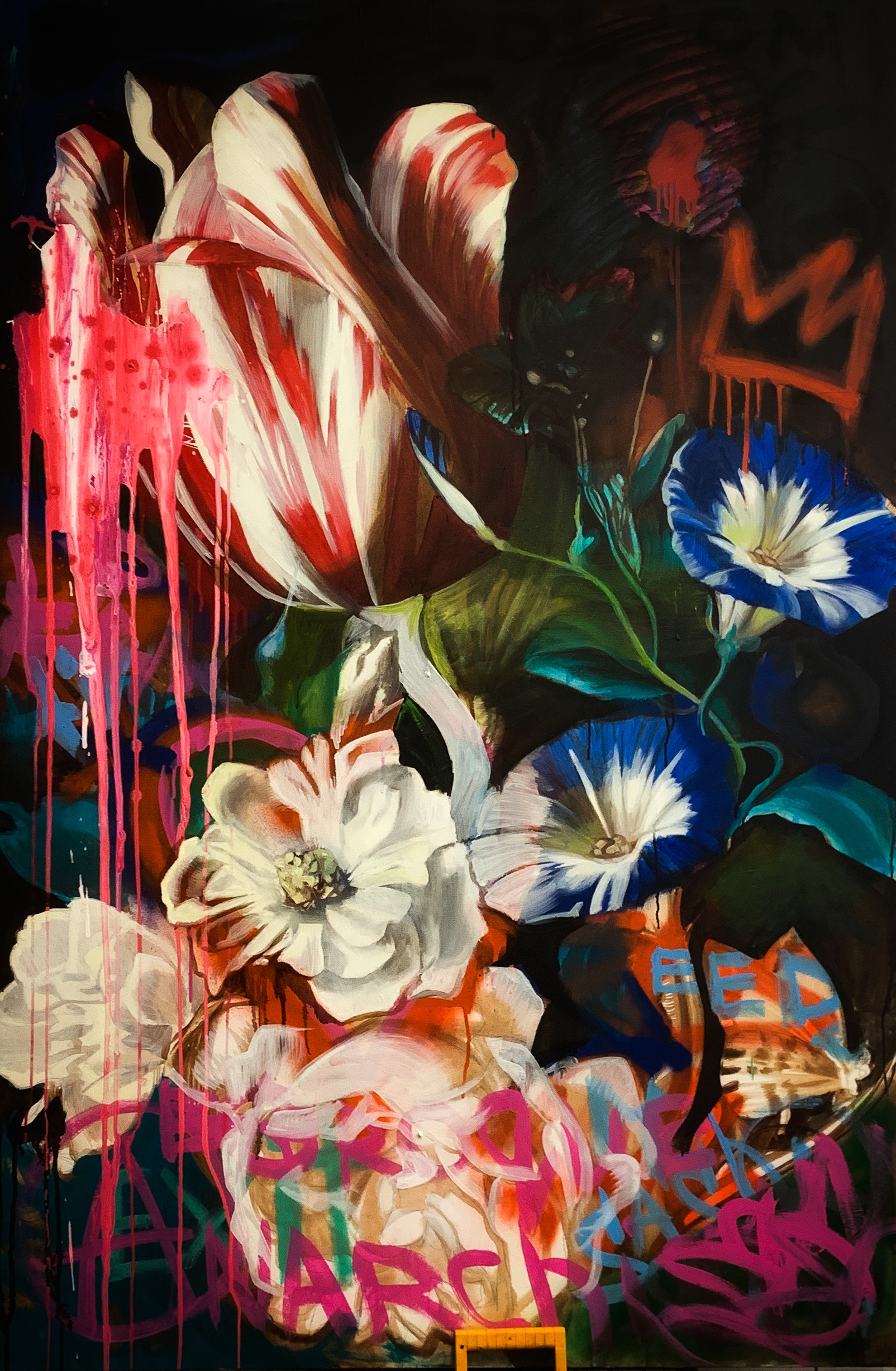
The pandemic made me reconsider the way we live as a whole society and its implication for me and my life. The expulsion from the Garden of Eden came to me as the primordial story of loss and human mortality. I think we all have a forbidden garden inside us where we don't let anyone in. And in that garden, we cultivate features we like about ourselves while neglecting dark corners, just as we cultivate flowers in real gardens while neglecting the corners and letting them become overrun by weeds. At a time when words were failing me, visual art gave me a language to explore my own response to the pandemic. I started writing my feelings onto the canvas: words like “fear”, “pain” and ''The world will never be the same'' - a deeply private feeling that was echoed around me in the guise of the pandemic. Layers of paint allowed me to hide and speak at the same time. Inscribing the words ''post-pandemic society'' into my painting gave me comfort and relief.
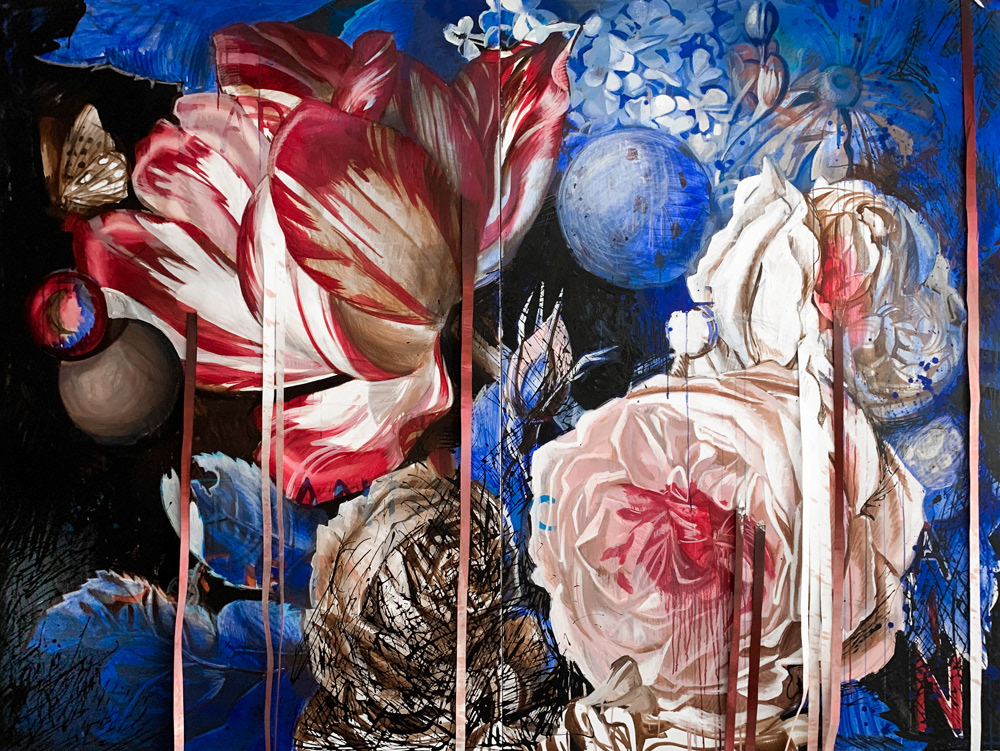
Post-Pandemic Society, dyptich, 150 x 200 cm, oil in canvas, 2020, London
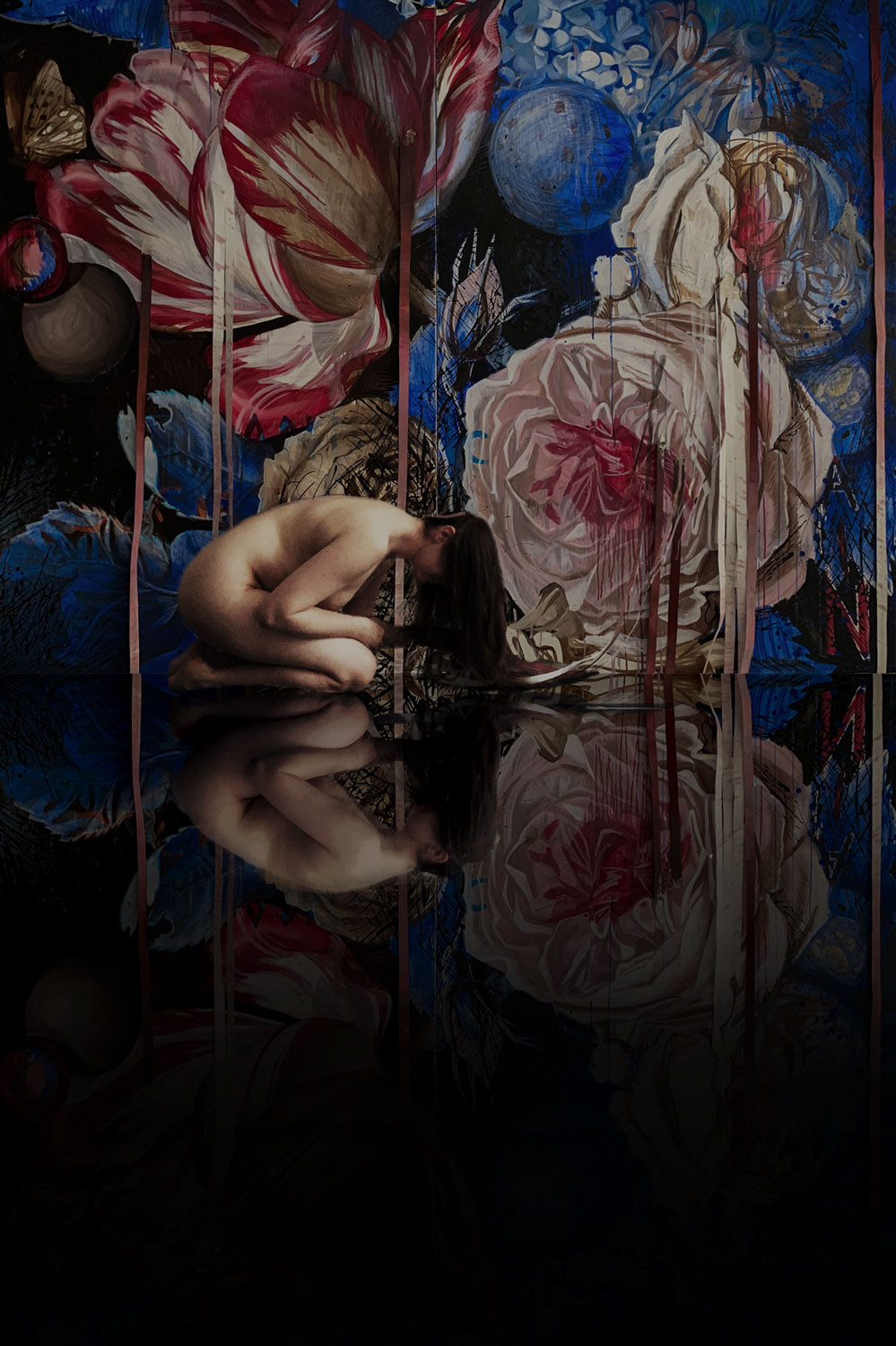
View of Performance
As a memorial to all those who died in this pandemic, I mounted bloody ribbons to my painting. The idea partly came from my trip to China where people remember the dead by tying ribbons to trees in sacred places. The ribbons were hanging down off my canvas and I wove them into my hair and photographed myself with the painting. The piece was inspired by the work of Italian theatre director and designer Romeo Castellucci – a master of combining Baroque and the avant-garde. I wanted to capture the fragility and vulnerability of human bodies. The ribbons formed a nest where I placed some eggs, a symbol of rebirth, whose fragility I used for an interactive performance. That was an experiment to uncover unconscious patterns in how we live.

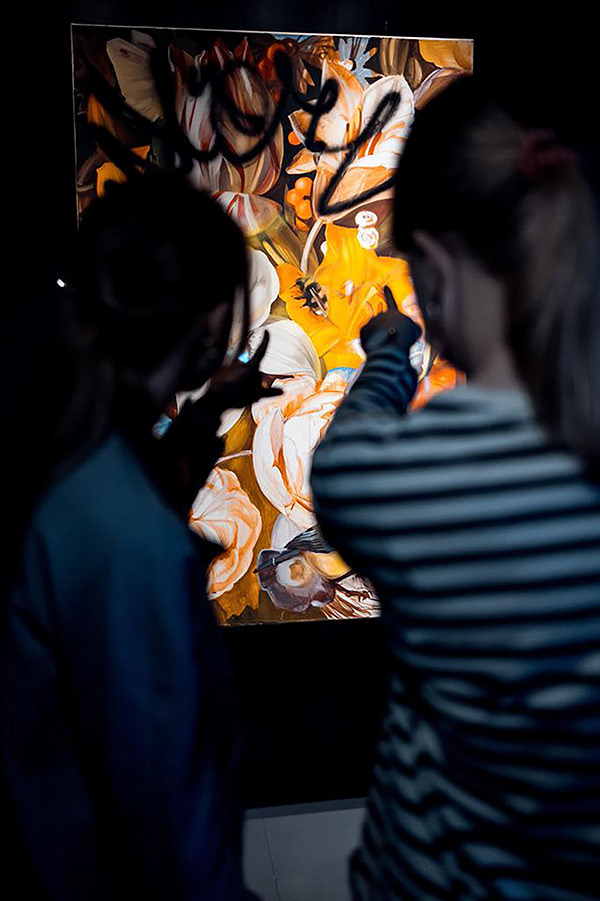
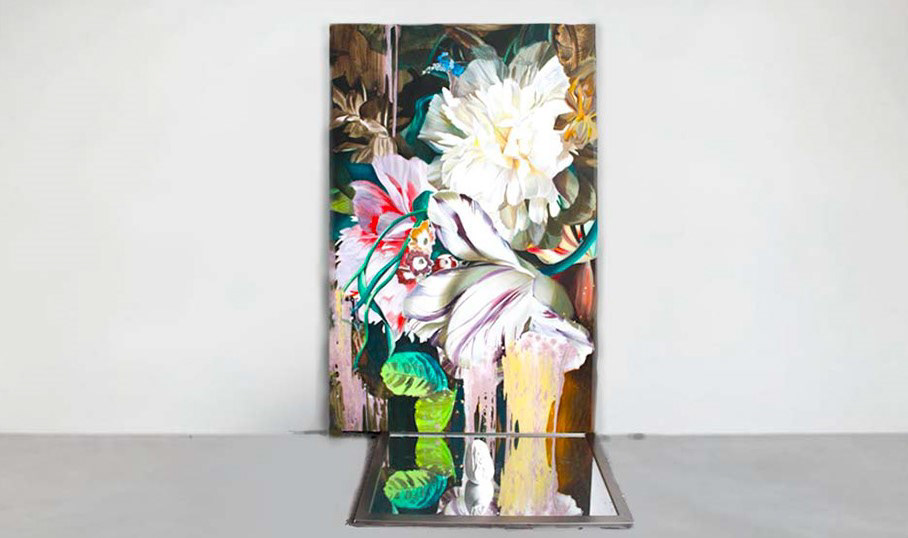
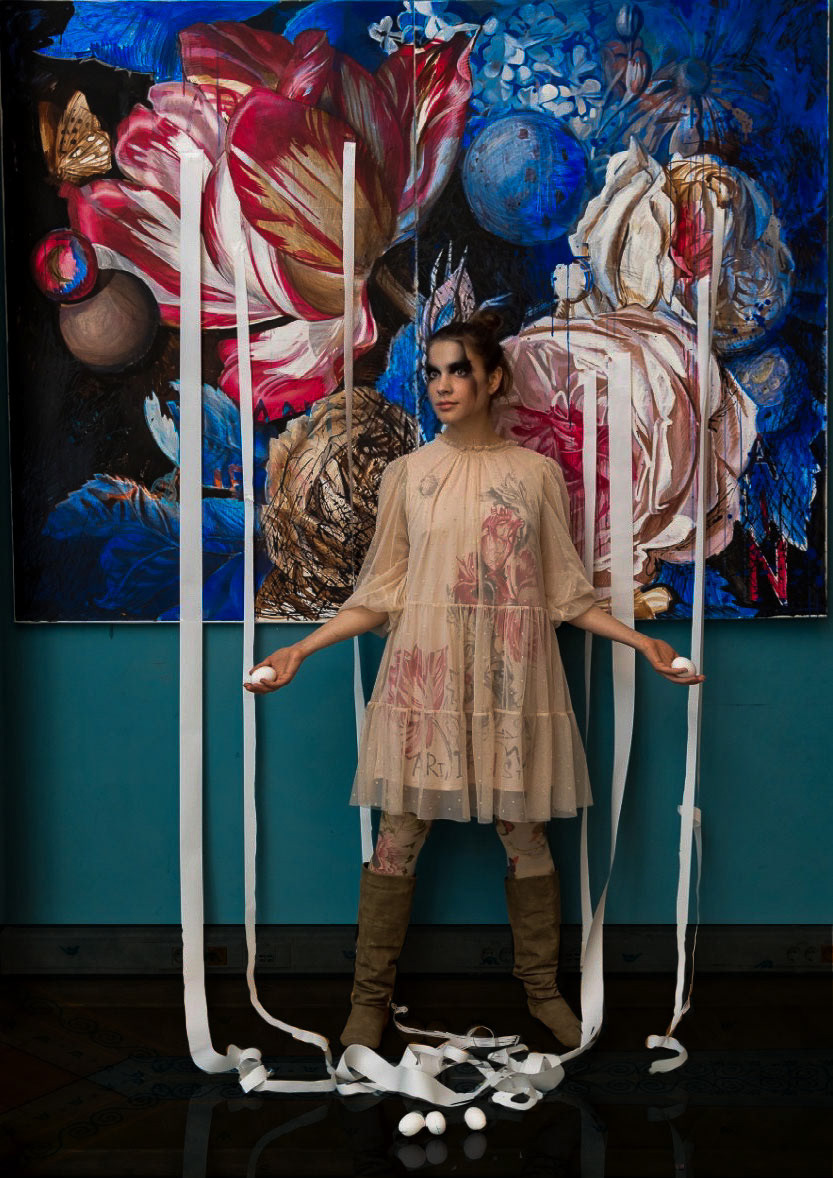
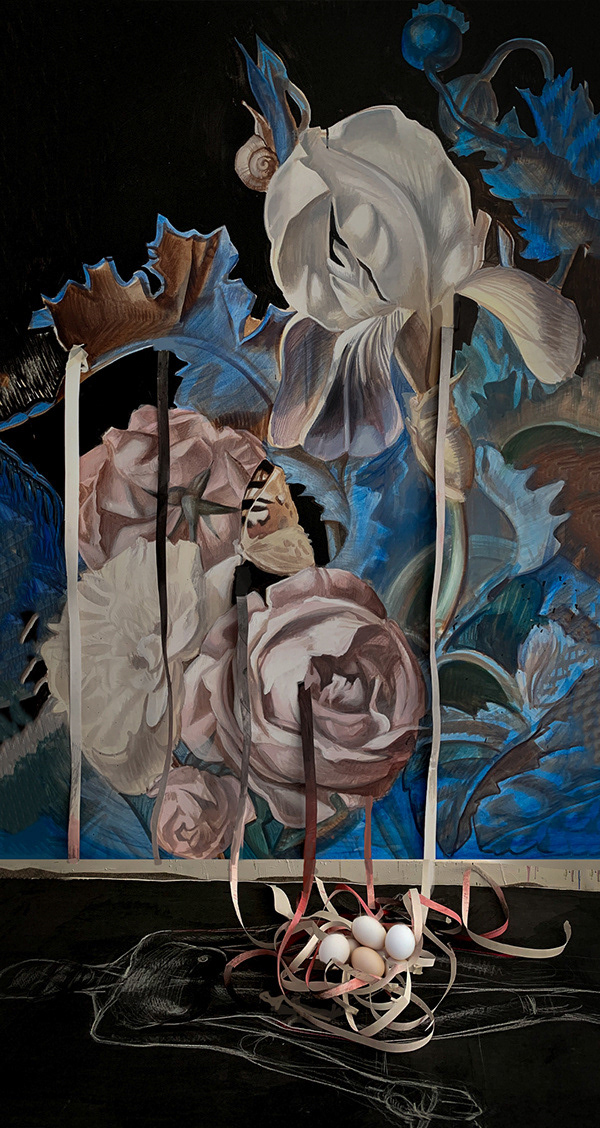
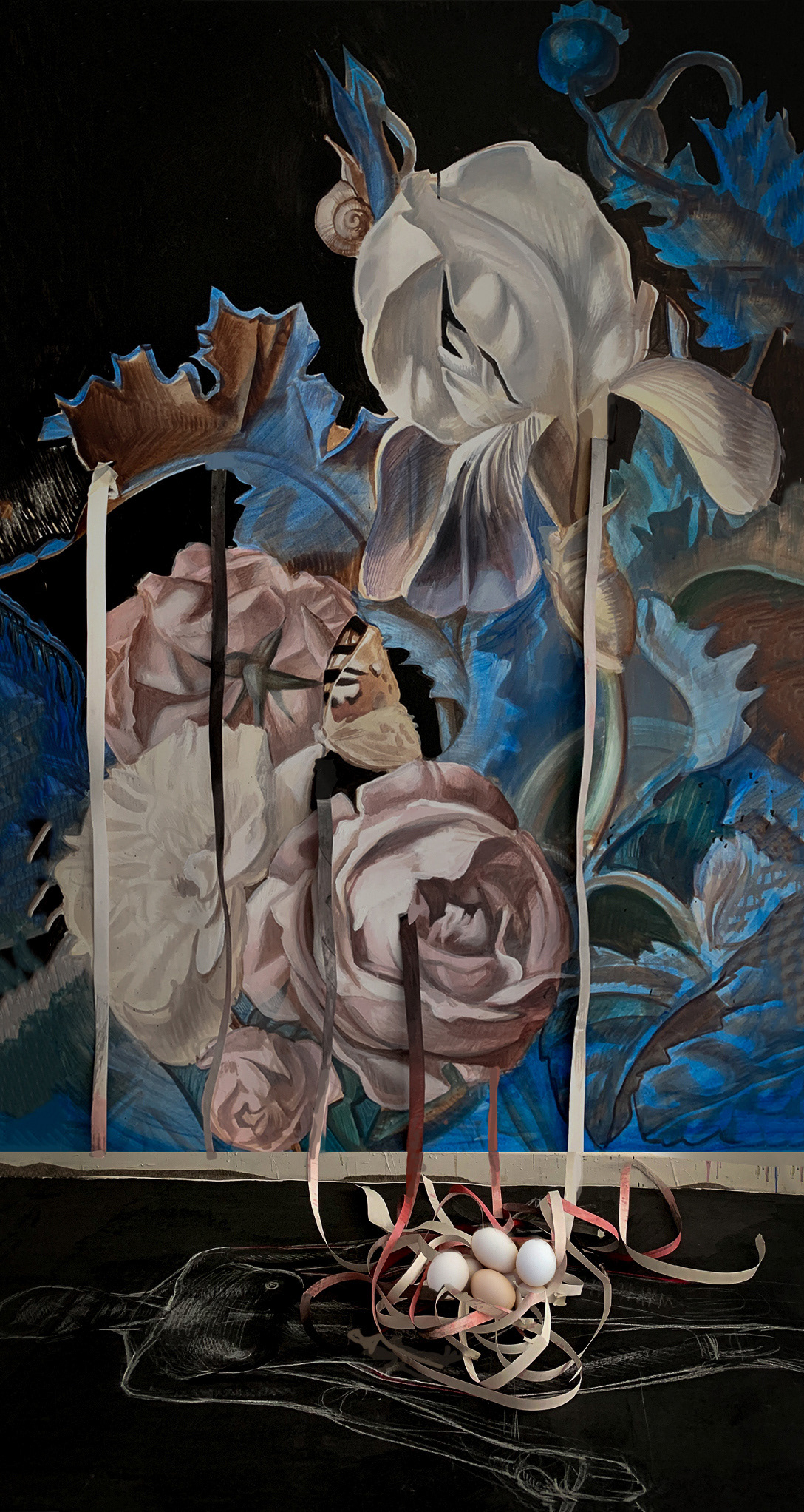
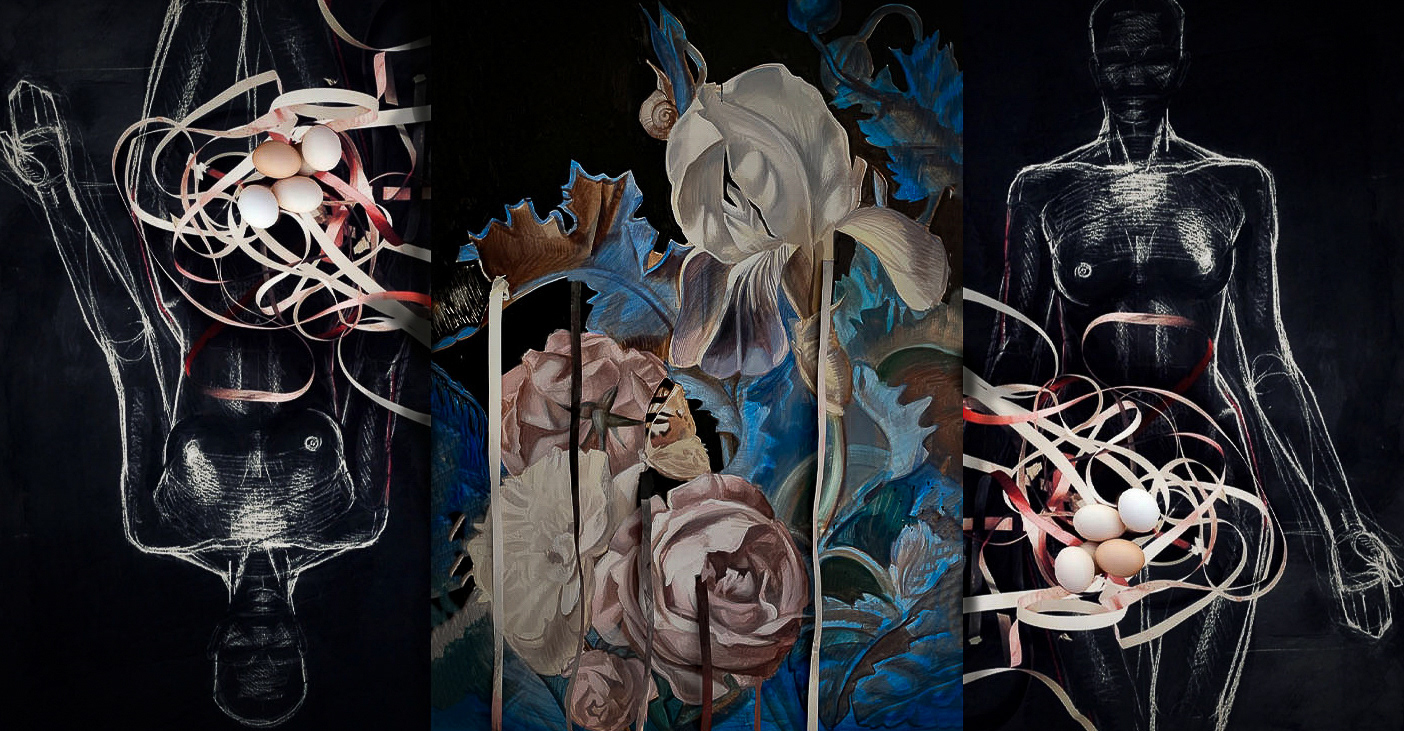
One of the works is a triptych whose middle panel is an oil painting placed just in front of two acrylic panels, all tied together by ribbons. The paintings with poppies, planets and blood cells were made during a SpaceX launch, which reminded me of the early efforts at space exploration in the baroque epoch when Copernicus and Galileo first proposed the existence of the solar system with the planets revolving around the sun.
Viral contagion occurs through the media as well as through the airborne disease. As we broadcast, ‘share’, ‘follow’ and ‘like’, ideas circulate and spread. As with the Forbidden Garden series, I use the painting technique of the Baroque and Renaissance masters who lived through pandemics too. But this connection to the past does not negate the present. Plexiglass and mirrors, props, neon lights and chiaroscuro commonly used in set design, add a third, theatrical dimension, intruding into the viewer’s space yet, as if to invite us in. By reflecting the painting, the plexiglass and mirrors conjure up another way of seeing - possibly another world or life after death.

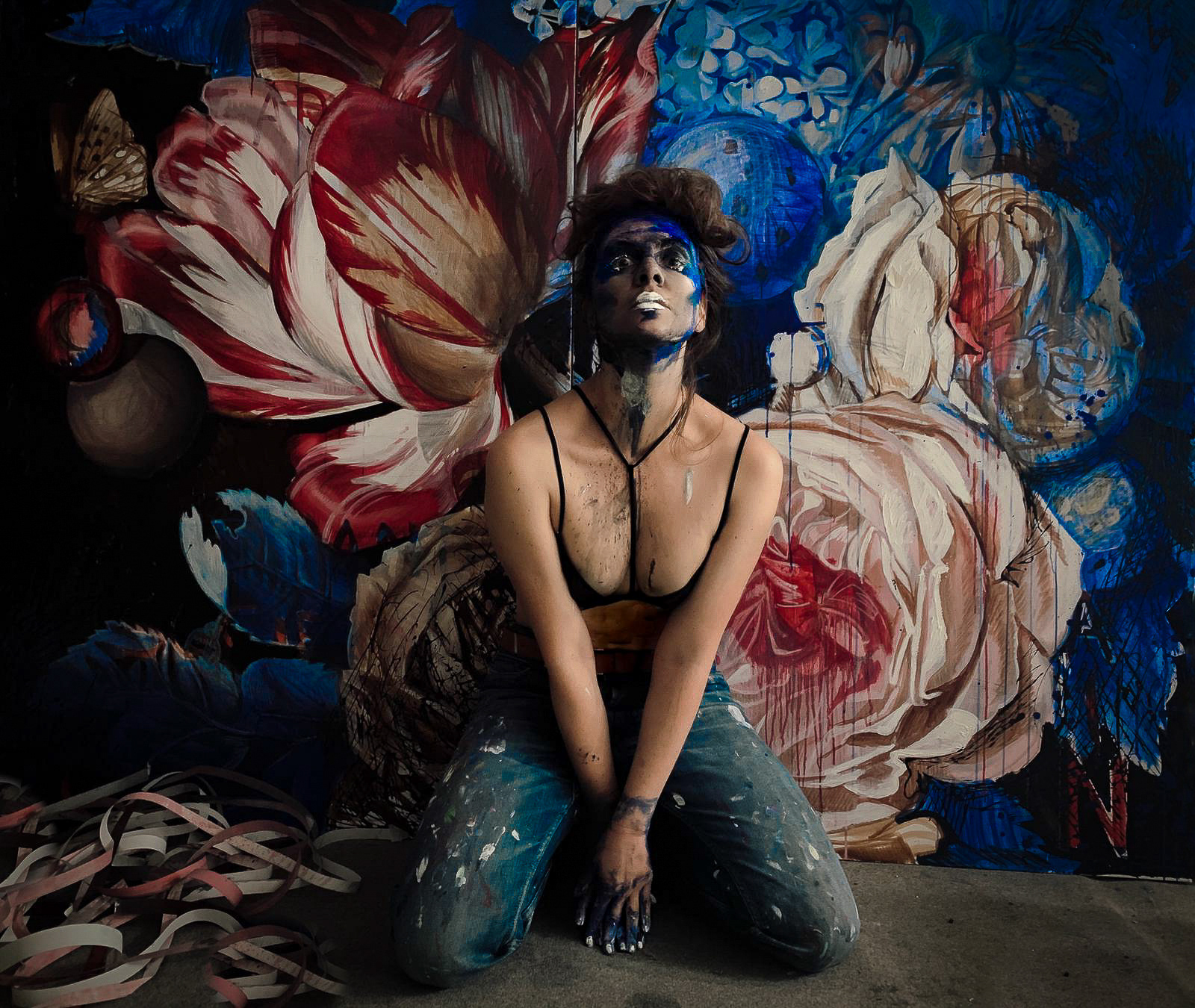
I began to integrate my body with my art because my art is part of me. As a set and costume designer, it was a natural progression to put my art on my body and incorporate my body into my art. In 2020, inspired by the designs of Alexander McQueen and Vivienne Westwood, I started drawing parts of my paintings on my clothes, which I would use for performance pieces.
